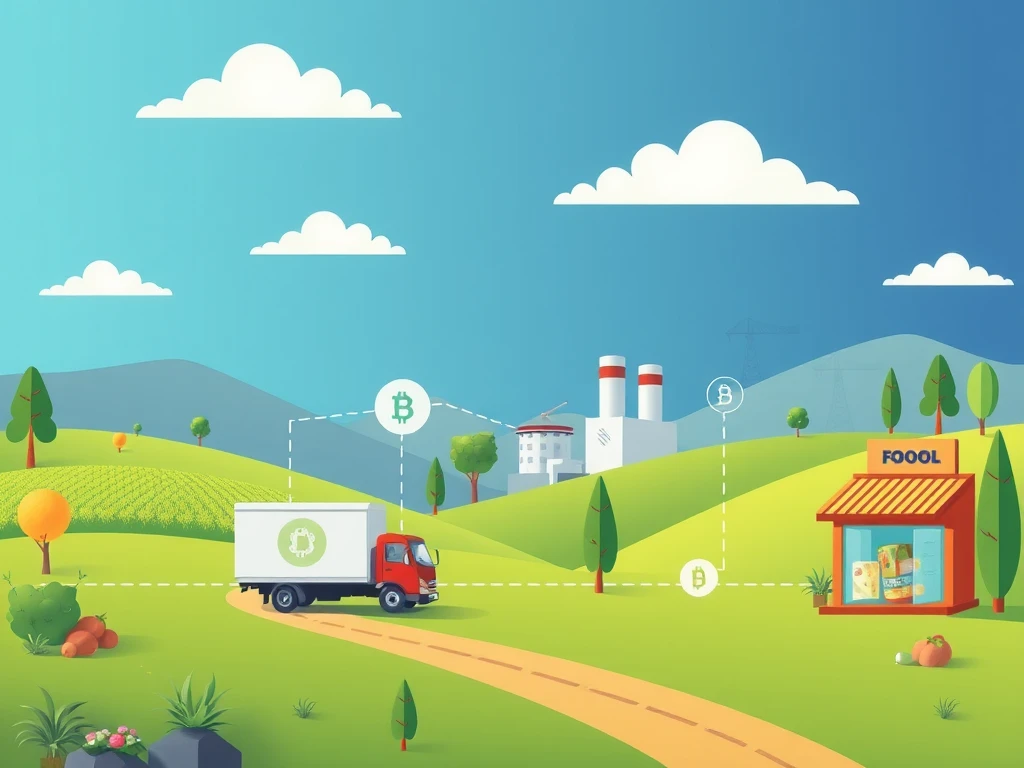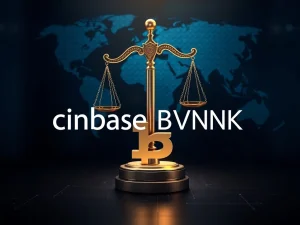Blockchain’s Powerful Role: Ending the $50 Billion Food Fraud Crisis

The global food industry faces a hidden enemy costing billions and risking public health: food fraud. This issue, ranging from mislabeling to dangerous substitutions, erodes trust and harms legitimate businesses. But a technology often associated with cryptocurrency, blockchain, is emerging as a potential weapon in this critical battle. While not a magic bullet, its principles of transparency and immutability offer a path towards a more secure and trustworthy food system.
Understanding the Scale of Food Fraud
Most consumers are unaware of the significant impact of food fraud. It’s not just about being cheated on price; it can have severe health consequences. Experts estimate the global cost at anywhere from $30 billion to $50 billion annually. As David Carvalho of Naoris Protocol points out, this amount is equivalent to the GDP of a small country. This intentional deception about food quality or content involves tactics like dilution, substitution, counterfeiting, and misrepresentation. Past incidents, like the melamine scandal in China that affected infants, highlight the devastating human cost. Temujin Louie, CEO of Wanchain, notes how fraud creates a vicious cycle, destroying consumer trust and harming legitimate brands.
Why Current Supply Chains Are Vulnerable
The complex nature of modern supply chain networks provides fertile ground for fraudulent activity. Products often pass through many hands and across borders, creating opacity. The cold chain, vital for many perishables, is particularly susceptible to failures that fraudsters can exploit. Fragmented data systems worsen the problem. Carvalho explains that companies often use internal tracking that doesn’t connect with suppliers or customers, creating ‘information islands’. Without shared, reliable data, fraudulent items can move through the system undetected.
How Blockchain Enhances Food Traceability
Blockchain technology offers a fundamentally different approach to supply chain management. Instead of relying on trusting intermediaries and paper records, it shifts towards a system based on verifiable data. Key features make it suitable for enhancing traceability:
- Decentralization: No single entity controls the data, making it harder to manipulate.
- Immutability: Once data is recorded on the chain, it cannot be altered or deleted, creating a permanent audit trail.
- Selective Transparency: Allows sharing relevant data with authorized parties without exposing sensitive commercial information.
- Smart Contracts: Can automate processes and enforce agreements based on verified data.
- Cryptography: Ensures the integrity and security of the ledger entries.
Integrating blockchain with IoT sensors can record environmental conditions (like temperature for cold chains) immutably. This creates a robust record of a product’s journey.
Real-World Examples and Progress
Despite challenges, blockchain is starting to prove its value in the food sector. Walmart, in partnership with IBM, uses Hyperledger Fabric for tracing products, drastically reducing the time needed for tracking. Companies like TE-Food and Provenance offer specialized blockchain solutions for food traceability and safety. Major players like Nestlé and Carrefour, along with platforms like Seafood Souq, are actively exploring and implementing blockchain to improve transparency. Louie highlights this shift towards a system based on verifiable data rather than just trusting intermediaries. Carvalho adds that increased visibility makes fraudulent activities riskier and easier to expose.
The Challenges of Implementing Blockchain for Food Safety
While promising, blockchain is not without its hurdles. Scalability, cost, integrating with existing legacy systems, and ensuring interoperability across different platforms remain significant barriers. The fundamental ‘garbage in, garbage out’ problem persists – blockchain verifies data integrity *on* the chain, but cannot guarantee the accuracy of data *entering* it. Oracles and IoT devices are potential points of failure or manipulation. Manual data entry is also susceptible to human error or fraud. Privacy concerns are also real, as companies are hesitant to expose sensitive data. Permissioned blockchains and careful data access protocols are necessary solutions. Regulatory uncertainty and the need for broad stakeholder adoption across the entire supply chain are additional complexities. Louie advises starting with specific, high-value use cases rather than broad, unfocused implementations. Carvalho stresses that technology must be paired with redesigned business processes, training, and a culture of collaboration.
A Synthesized Future for Food Integrity and Food Safety
The future likely involves a combination of technologies. Blockchain, integrated with IoT for data collection and AI for anomaly detection, can create a powerful defense against food fraud. Rapid testing, smart packaging, and digital certificates further enhance integrity. The infrastructure built to fight fraud also yields benefits like improved efficiency, reduced waste, and stronger sustainability claims. Pilot projects and industry collaborations are paving the way. The potential goes beyond reducing fraud to enhancing food safety, increasing consumer confidence, and building a more resilient food system. While the fight against food fraud is costly, blockchain, thoughtfully deployed, offers a path to a more transparent and trustworthy future for the food we eat.







